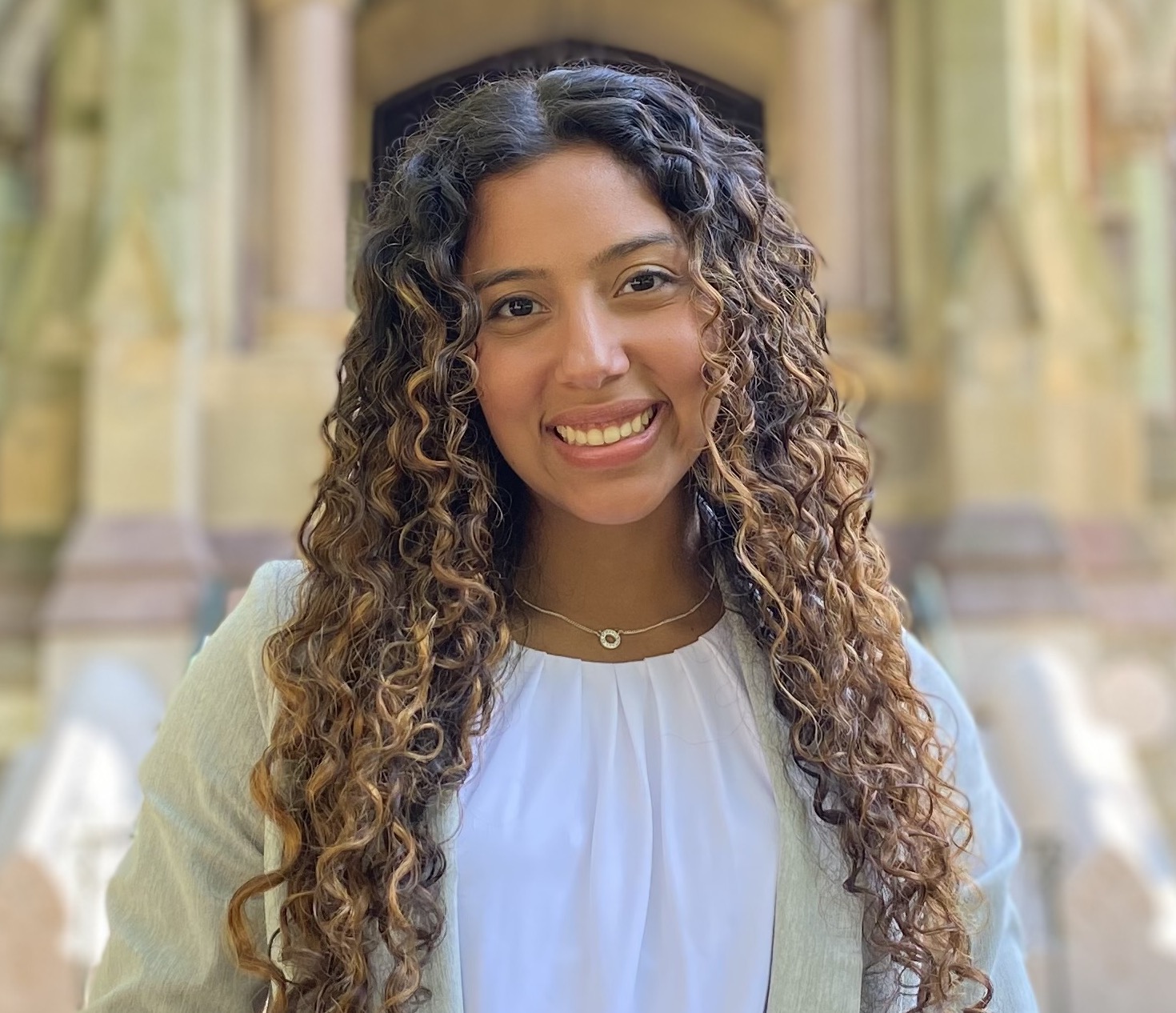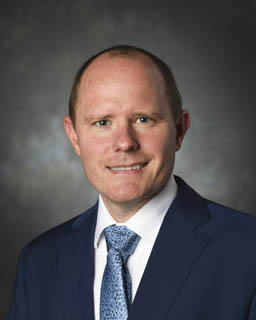Biomaterials
(C-106) 3D GelMA and Mesenchymal Stem Cell Wound Healing Model

Adriana Blanco Diaz
Undergraduate Researcher
The Pennsylvania State University
Prior Lake, Minnesota, United States
Justin Brown
Primary Investigator
The Pennsylvania State University, United States- AB
Presenting Author(s)
Primary Investigator(s)
Presenting Author(s)
In order to fabricate a model that mimics the wound healing response, it is important to understand the microenvironment of a wound. There are still no effective scar-preventing wound healing therapies that restore the full function of the skin. For there to be effective therapies, it is important to model this response and understand simple cell behavior and the microenvironment of a wound. In this 3D model, we decided to use mesenchymal stem cells (MSCs) and GelMA. MSCs are used in tissue engineering applications due to their ability to promote cell migration, epithelialization, and angiogenesis to help wounds heal. GelMA was selected as our biomaterial for this model because it is based on the natural ECM protein collagen, which is prevalent in dermal tissue. Due to it being a natural biomaterial, it is very biosafe and is frequently used for wound healing applications. This study aims to provide a physiologically relevant 3D culture wound healing model through the use of GelMA and MSCs. A wound mold will be placed within the GelMA x MSC co-culture and then removed. The wound closure rates, cell migration, and proliferation will then be quantified over 12 hours. We expect to observe, cell attachment to the GelMA, increased wound closure rates in our 3D model in comparison to a 2D scratch assay, and increased proliferation with the 3D model. This model will be compared to features of the wound healing response to determine its relevance and application of this co-culture in potential therapies.
Materials and Methods::
Cell Culture
Green fluorescent protein (GFP) Mouse mesenchymal stem cells (mMSCs) were cultured in MEM Alpha 1x (gibco) with 10% PBS and 1% P/S. They were cultured in a humidified incubator at a constant temperature of 37ºC and 5% CO2. The media culture was changed periodically every other day. For the model, 10,000 cells per cm2 were passaged to each 3.75cm diameter pre-prepared and sterilized plates.
GelMA
The process of synthesizing GelMA is broken up into four steps: synthesis, dialysis, lyophilization, and cross-linking. The protocol by (Shirahama et al., 2016) was used for synthesizing, dialyzing, and lyophilizing the GelMA. For the crosslinking and casting procedure, the protocol by (Loessner et al., 2016)was employed.
MSCs X GelMa Model Design
The wound mold was created using four p20 pipettes and a 22mm x 22mm glass cover slip. The four pipettes were arranged in a diamond order centered and glued on top of the glass coverslip using Norland Optical Adhesive 68. After the GelMA was casted, the mold was placed before introducing the cells and media. The cells, media, and GelMA were cultured with the mold. After 4 hours the mold was removed, and the gaps left by the wound mold were filled in with GelMA. The model was imaged to observe the wound closure rate.
Results, Conclusions, and Discussions::
Results
After conducting our 2D scratch assay, we observed the cells migrating toward the center where the scratch was made. They were imaged over 12 hours. We will use this 2D scratch assay as a point of comparison for our 3D GelMA model. We will compare the cell migration in these two models. In Figure 1 you can see the monolayer of cells and the scratch through the monolayer.
Before conducting the experiment with the wound mold, we decided to verify that the cells adhered to the GelMA. We observed 0 minutes, 30 minutes, 2 hours, and 8 hours immediately after seeding cells onto the GelMA. In Figure 2 you can see some of the time points and the cell attachment. As seen in these images some migrated toward other areas of the GelMA while some stayed localized to one area. Additionally, we observed cell attachment to the GelMA after 24 hours of incubation. In Figure 3 you can see a schematic of the Hoechst staining we conducted on our GelMA + cells where you can see the nuclei of the attachment MSCs to the GelMA.
Conclusion
Overall, we designed a 3D GelMA and MSC wound healing model to help us understand cell behavior and the microenvironment of a wound. We observed cell behavior after seeding cells onto GelMA. Additionally, we verified the attachment of MSCs to GelMA using Hoechst staining. We are continuing to develop the model and expect to see increased wound closure rates and increased proliferation in our GelMA and MSC wound healing model.
Discussion
Our validation of the attachment of cells and GelMA coincides with previous research (Shirahama et al., 2016). Additionally, many wound healing models are limited to fibroblast; however, MSCs are also a part of the wound healing response. There is also curiosity about whether fibroblasts differentiate from MSCs. This model will further the exploration of the wound microenvironment in a 3D culture. This understanding will lead to the development of therapies that contribute to nurturing the microenvironment of a wound.
Acknowledgements (Optional): : Brown Lab, Millennium Scholars Program, McNair Scholars Program, OGEEP Office
References (Optional): :
References
Caliari, S. R., & Burdick, J. A. (2016). A practical guide to hydrogels for cell culture. In NATURE METHODS | (Vol. 13, Issue 5).
Eyckmans, J., & Chen, C. S. (2017). 3D culture models of tissues under tension. In Journal of Cell Science (Vol. 130, Issue 1, pp. 63–70). Company of Biologists Ltd. https://doi.org/10.1242/jcs.198630
García, A. J. (2005). Get a grip: Integrins in cell-biomaterial interactions. Biomaterials, 26(36), 7525–7529. https://doi.org/10.1016/j.biomaterials.2005.05.029
Grada, A., Mervis, J., & Falanga, V. (2018). Research Techniques Made Simple: Animal Models of Wound Healing. In Journal of Investigative Dermatology (Vol. 138, Issue 10, pp. 2095-2105.e1). Elsevier B.V. https://doi.org/10.1016/j.jid.2018.08.005
Laboratory Models for the Study of Normal and Pathologic Wound Healing. (n.d.).
Li, Y., Liu, D., Tan, F., Yin, W., & Li, Z. (2023). Umbilical cord derived mesenchymal stem cell-GelMA microspheres for accelerated wound healing. Biomedical Materials, 18(1), 015019. https://doi.org/10.1088/1748-605X/aca947
Liu, J., Gao, J., Liang, Z., Gao, C., Niu, Q., Wu, F., & Zhang, L. (2022). Mesenchymal stem cells and their microenvironment. In Stem Cell Research and Therapy (Vol. 13, Issue 1). BioMed Central Ltd. https://doi.org/10.1186/s13287-022-02985-y
Liu, Q., Dai, W., Gao, Y., Dong, L., Jia, H., Li, S., Guo, L., Fan, Y., & Zhang, X. (2022). The synergistic regulation of chondrogenesis by collagen-based hydrogels and cell co-culture. Acta Biomaterialia, 154, 194–211. https://doi.org/10.1016/j.actbio.2022.10.017
Loessner, D., Meinert, C., Kaemmerer, E., Martine, L. C., Yue, K., Levett, P. A., Klein, T. J., Melchels, F. P. W., Khademhosseini, A., & Hutmacher, D. W. (2016). Functionalization, preparation and use of cell-laden gelatin methacryloyl-based hydrogels as modular tissue culture platforms. Nature Protocols, 11(4), 727–746. https://doi.org/10.1038/nprot.2016.037
Murray, R. Z., West, Z. E., Cowin, A. J., & Farrugia, B. L. (2019). Development and use of biomaterials as wound healing therapies. Burns & Trauma, 7. https://doi.org/10.1186/s41038-018-0139-7
Rodrigues, M., Kosaric, N., Bonham, C. A., & Gurtner, G. C. (2019). Wound Healing: A Cellular Perspective. Physiol Rev, 99, 665–706. https://doi.org/10.1152/physrev.00067.2017.-Wound
Shirahama, H., Lee, B. H., Tan, L. P., & Cho, N. J. (2016). Precise tuning of facile one-pot gelatin methacryloyl (GelMA) synthesis. Scientific Reports, 6. https://doi.org/10.1038/srep31036
